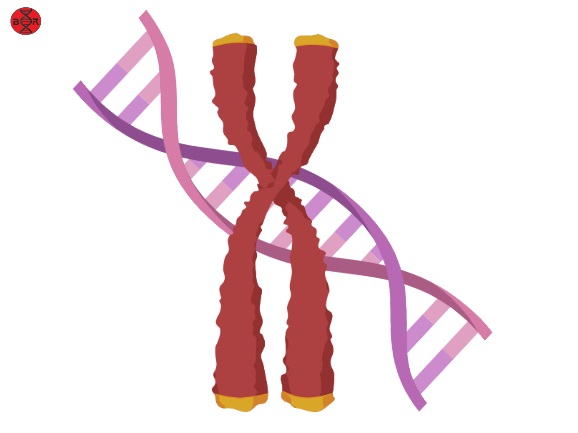Deoxyribonucleic Acid, or DNA for short, is often referred to as the blueprint of life. It is the genetic material that makes up all living organisms, from single-celled bacteria to complex multicellular animals like humans. DNA contains the instructions that determine an organism’s traits, such as eye color, height, and susceptibility to certain diseases. But how does DNA work, and what is the relationship between DNA, genes, and chromosomes?
DNA: The Molecule of Life
DNA is a long, double-stranded helical molecule that is composed of nucleotides. A nucleotide consists of three parts: a sugar molecule (deoxyribose), a phosphate molecule, and a nitrogenous base. The four nitrogenous bases in DNA are adenine (A), cytosine (C), guanine (G), and thymine (T). The order of these bases in the DNA sequence determines the genetic information that is carried by the molecule.
DNA is found in the nucleus of eukaryotic cells and in the cytoplasm of prokaryotic cells. It is organized into structures called chromosomes, which are made up of tightly packed DNA. Humans have 23 pairs of chromosomes, for a total of 46 chromosomes in each cell.
Genes: The Instructions for Proteins
A gene is a segment of DNA that codes for a specific protein or RNA molecule. Proteins are the building blocks of life and are responsible for a wide range of functions in the body, such as transporting oxygen, digesting food, and fighting infections.
Each gene contains the instructions for making a specific protein. The DNA sequence of a gene is transcribed into a molecule called messenger RNA (mRNA), which carries the genetic information from the nucleus to the ribosomes in the cytoplasm. The ribosomes use the mRNA sequence to assemble amino acids into a protein.
Not all DNA codes for proteins, however. Some DNA sequences are transcribed into non-coding RNA molecules, which play a variety of regulatory roles in the cell.
Chromosomes: Packages of DNA
Chromosomes are structures made up of DNA and protein. In eukaryotic organisms, chromosomes are found in the nucleus of cells. Each chromosome contains many genes, arranged along its length. The number and arrangement of chromosomes varies among different species. Humans have 23 pairs of chromosomes, while fruit flies have only four pairs.
Chromosomes are responsible for passing on genetic information from one generation to the next. During cell division, the chromosomes are duplicated and distributed to the daughter cells. This ensures that each cell has a complete set of genetic information.
Mutations: Changes in DNA
Mutations are changes in the DNA sequence that can alter the function of a gene or protein. Some mutations have no effect on the organism, while others can cause disease or affect an individual’s traits. Mutations can occur spontaneously or as a result of exposure to environmental factors such as radiation or chemicals.
Scientists use DNA sequencing to study mutations and the genetic basis of disease. By analyzing the DNA sequence of a gene, researchers can identify mutations that may be responsible for a particular disease. This information can be used to develop new treatments and therapies.
DNA, genes, and chromosomes are the building blocks of life. DNA contains the genetic information that determines an organism’s traits, while genes contain the instructions for making proteins. Chromosomes are packages of DNA that are responsible for passing on genetic information from one generation to the next. Understanding the relationship between these three components is essential for understanding the workings of the living world.
Image: Created with BioRender.com
Graduated from the University of Kerala with B.Sc. Botany and Biotechnology. M.Sc. Biotechnology from the University of Kerala. Attended certificate course in Artificial Intelligence for Everyone from Deeplearning.AI, Influenza Prevention and Control from World Health Organization. Attended workshops related to Bioinformatics at the University of Kerala. 3 years of experience in website management. Experience in WordPress, Blogger, Google Analytics, and Google Search Console.






